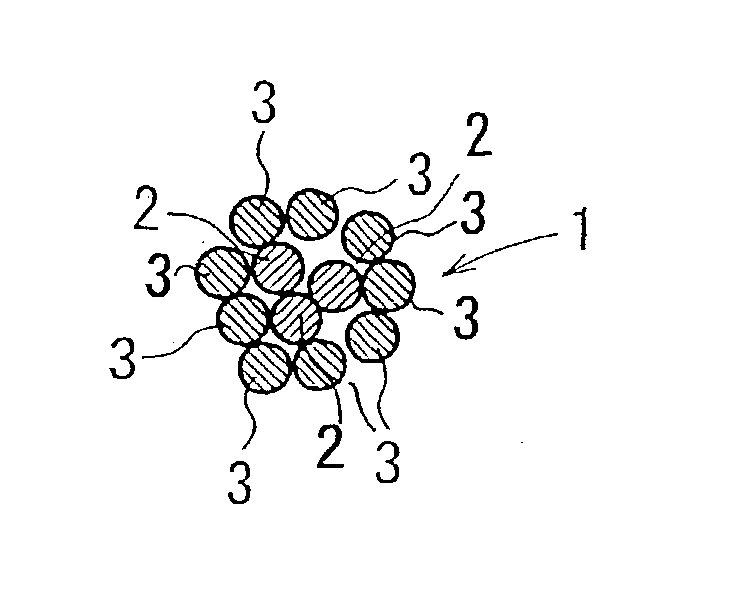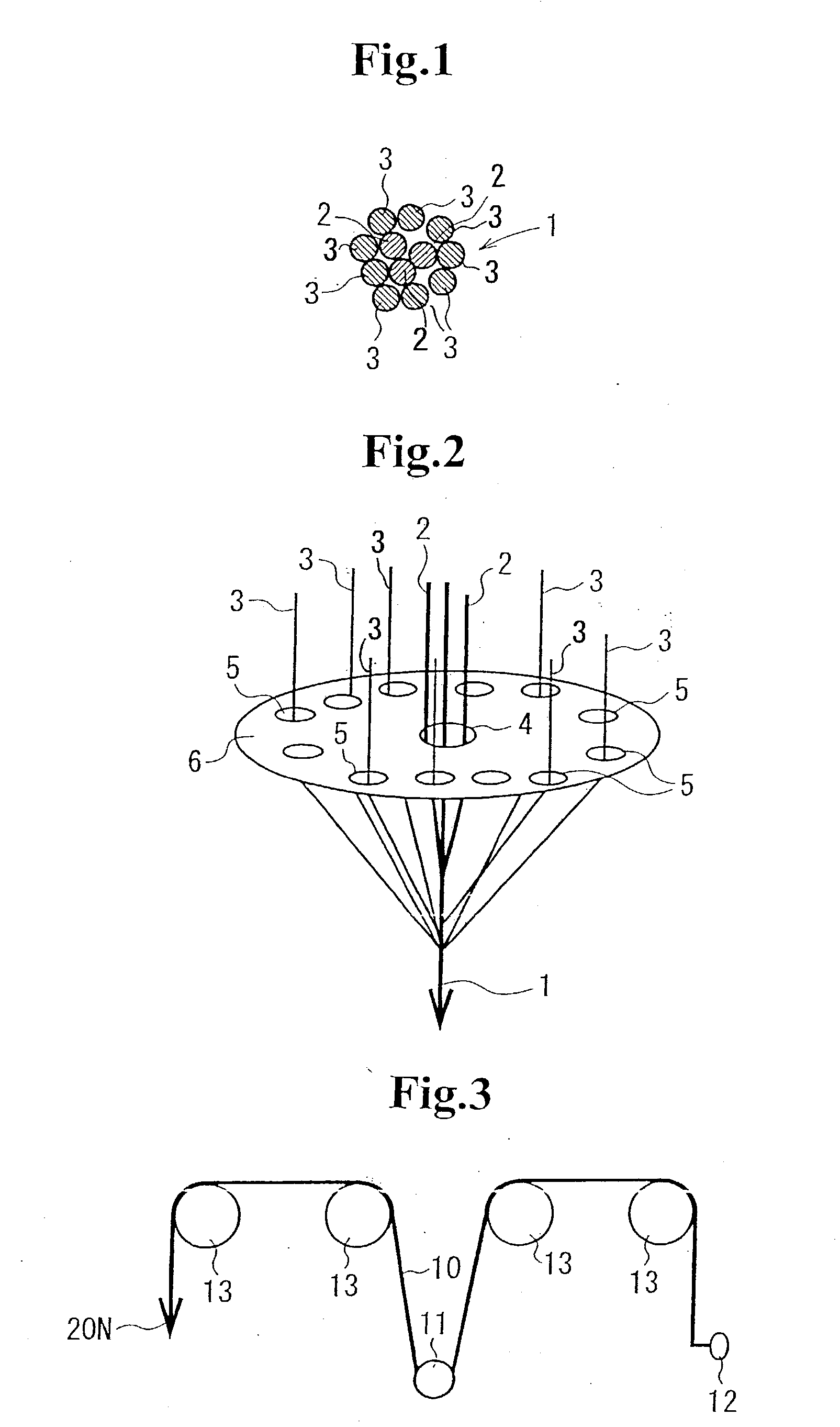Hybrid cord and rubber product
a technology of rubber products and hybrid cords, applied in the field of hybrid cords and rubber products, can solve the problems of low retention strength of aramid fiber codes, high dimensional stability of glass fiber reinforced codes, and long time-consuming, and achieve the effect of reducing the number of times of aramid fiber reinforced codes
- Summary
- Abstract
- Description
- Claims
- Application Information
AI Technical Summary
Benefits of technology
Problems solved by technology
Method used
Image
Examples
example 1
[0029] Three high strength glass fiber strands comprising 200 lines of filaments each having a fiber diameter of 7 .mu.m were grouped together without being twisted. The strands were applied with RFL treatment using an RFL containing chlorosulfoanted polyethylene based latex so that an RFL deposition was about 25% by weight on a solid basis.
[0030] Aramid fiber filaments each having a fiber diameter of 12 .mu.m and 400 denier manufactured by Teijin Limited under the trademark of "TECHNORORA" were applied with RLF treatment so that an RFL deposition was about 25% by weight on a solid basis similar to the glass fiber filaments.
[0031] The glass fiber filaments treated with RFL and the aramid fiber filaments treated with RFL were primarily twisted at a twisting rate of 2 turns / 25 mm respectively to provide glass fiber strands and aramid fiber strands.
[0032] Then, three glass fiber strands were passed through the guide hole 4 at the center of the guide 6 shown in FIG. 2 Eight aramid fiber...
example 2
[0039] The RLF treatment was conducted similar to Example 1 except that the RFL deposition on the glass fiber filaments and the aramid fiber filaments was about 20% by weight on a solid basis. Respective fiber filaments were primarily and properly twisted, and overcoated similar to Example 1. Four glass fiber strands and seven aramid fiber strands were used to produce the glass fiber-aramid fiber hybrid code similar to Example 1. The hybrid code was used to produce the rubber belt similar to Example 1.
[0040] The resulting hybrid code had elongation at break of 4.52%. As a result of the flexural fatigue test, the rubber belt had the strength of 845 N and the retention of strength of 83% after bending.
example 3
[0041] The same operation was conducted similar to Examples 1 and 2 except that the RFL deposition on the glass fiber filaments and the aramid fiber filaments was about 15% by weight on a solid basis. Five glass fiber strands and six aramid fiber strands were used to produce the glass fiber-aramid fiber hybrid code similar to Example 1. The hybrid code was used to produce the rubber belt similar to Example 1.
[0042] The resulting hybrid code had elongation at break of 4.56%. As a result of the flexural fatigue test, the rubber belt had the strength of 820 N and the retention of strength of 80% after bending.
PUM
| Property | Measurement | Unit |
|---|---|---|
| diameter | aaaaa | aaaaa |
| diameter | aaaaa | aaaaa |
| elongation at break | aaaaa | aaaaa |
Abstract
Description
Claims
Application Information
 Login to View More
Login to View More - R&D
- Intellectual Property
- Life Sciences
- Materials
- Tech Scout
- Unparalleled Data Quality
- Higher Quality Content
- 60% Fewer Hallucinations
Browse by: Latest US Patents, China's latest patents, Technical Efficacy Thesaurus, Application Domain, Technology Topic, Popular Technical Reports.
© 2025 PatSnap. All rights reserved.Legal|Privacy policy|Modern Slavery Act Transparency Statement|Sitemap|About US| Contact US: help@patsnap.com


